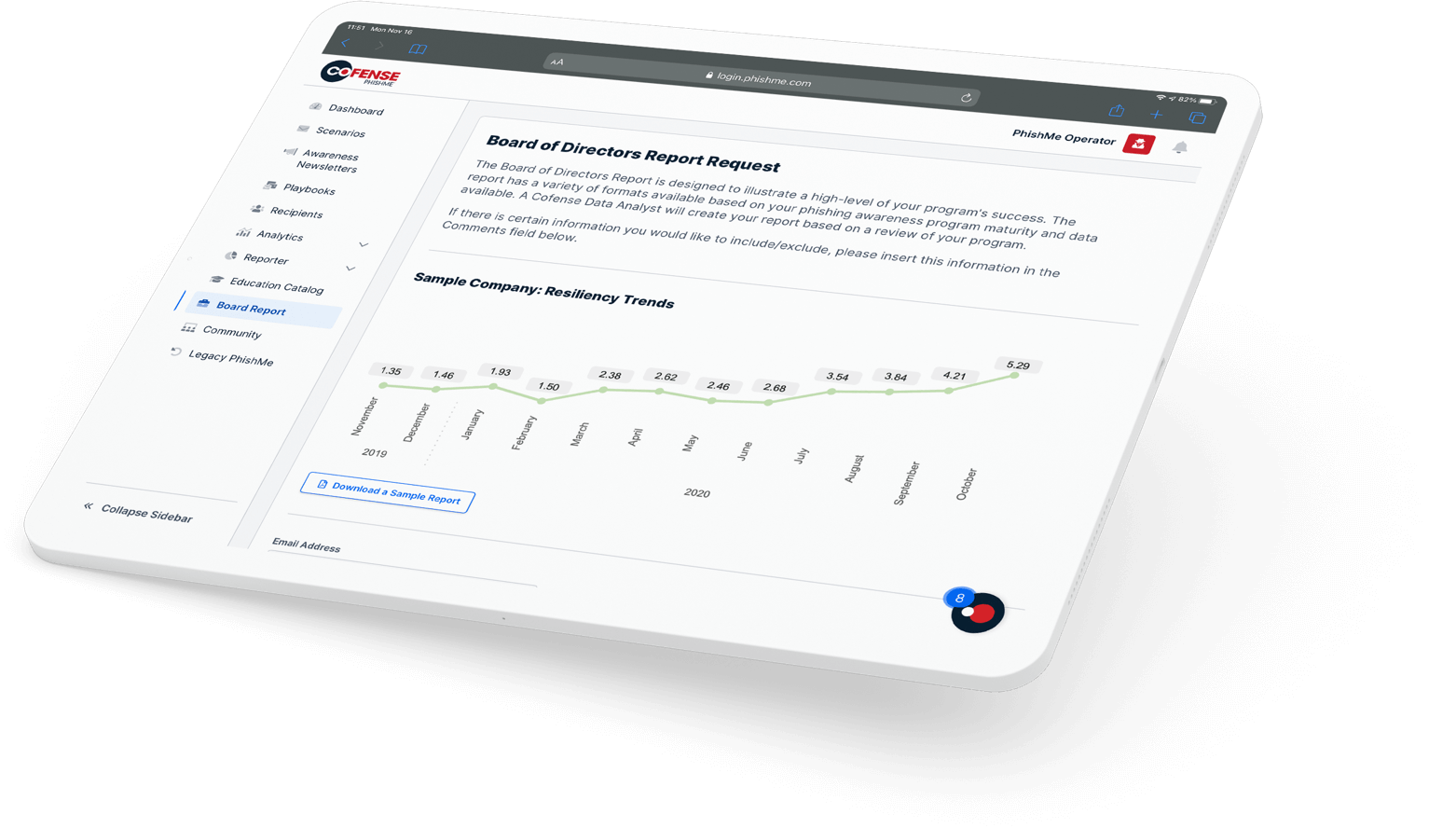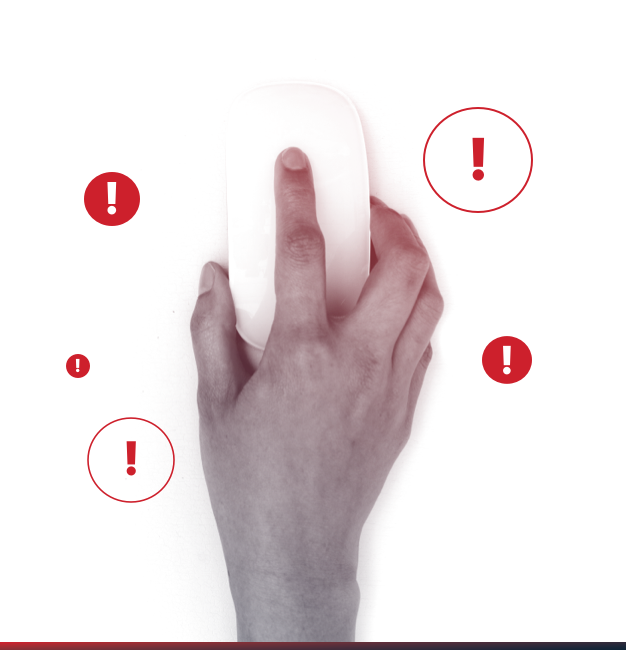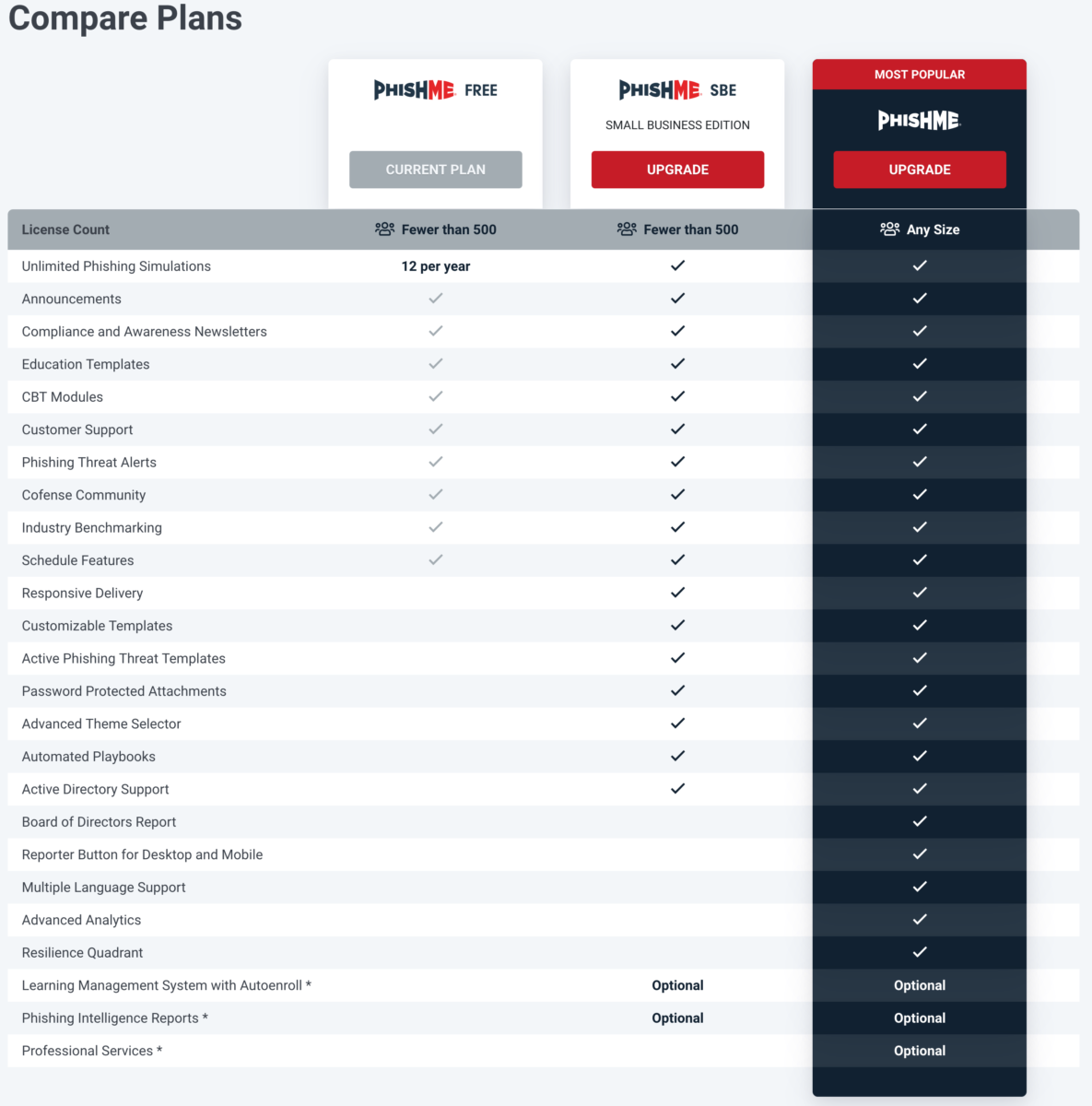DETECTION
Phishing Awareness Training, Anti-Phishing Tools and Threat Simulations
Cofense PhishMe™, your tool for organizational phishing resilience
Phishing awareness training based on real phish
Users are your front line when it comes to phishing defense. 100% of the phish we find are reported by users, while 0% were stopped by perimeter technology. Secure email gateways will inevitably fail. Make sure your employees are ready, active defenders — not targets — with our phishing awareness training program.
Empower users
Your employees need to be conditioned to spot and report phishing emails immediately. With Cofense PhishMe™, simulations are based on the latest threats known to bypass SEGs, empowering your users to become human threat detectors. With resilient users attuned to the latest phishing threats, you have the best organizational defense.

Identify and stop active threats
Threats to your business are constantly evolving. That’s why our Active Threat scenarios are the most relevant and up to date — they’re informed by intelligence gathered from the millions of real phishing threats analyzed by the Cofense Phishing Defense Center™, Cofense Intelligence™, and Cofense Labs™.

Customize your phishing awareness training program
Cofense PhishMe Playbooks let you configure a full 12-month program — complete with phishing simulation scenarios, landing pages, attachments, and educational content — in just a few clicks. Our Smart Suggest capability uses advanced algorithms and embedded best practices to recommend scenarios based on current active threats, industry relevance, and your program’s history.
Maximize user engagement
With Cofense PhishMe Responsive Delivery, you can deliver phishing simulations when users are active in their inbox to maximize interaction, eliminate whitelisting, and avoid global scheduling issues. And Cofense PhishMe Recipient Sync helps you make sure everyone’s enrolled by automatically syncing your master email recipient list with your user directory service.
Learn about Recipient Sync, available in the Azure App Gallery
Mitigate risk
The most important part of your phishing defense is reporting and resiliency rates. Boost reporting and help users become active defenders with Cofense Reporter™, our one-click reporting button. And with automated Board Reports, you can easily monitor program performance, reporting data, and your organization’s change in resiliency.


Learn from our network
Our team constantly updates our resource library so you can stay up to date on phishing, compliance, and cybersecurity. From videos to infographics to CBTs, the Cofense PhishMe Catalog has thousands of educational assets, and customers can access new premium content from our partners.
The complete phishing defense package
Phishing emails are unavoidable and constantly changing. That’s why we provide everything you need to catch them quickly. Our combination of technology and unique human insight allows us to detect and stop attacks — before they hurt your business.
Detection

Detect and remediate phishing threats that hit the inbox, within minutes.
Response

Reduce security operations burden through automated responses to phishing attacks.
Insights

Integrate the crowd-sourced intelligence of millions of users into other systems.
Learn more about Phishing Awareness Training
What is phishing awareness?
Phishing awareness is more than being aware of what a phishing email may look like. Employees need to understand the different types of phishing, how attacks can be engineered, and the consequences of clicking on a malicious link, responding to an email with the requested information or opening a file.
Phishing training for employees is one of the most effective ways to strengthen your company´s defenses against malware, ransomware, data loss, and Business Email Compromise (BEC) attacks.
Moreover, when your users report threats, your company can receive reciprocal information about phishing attacks found elsewhere. Such information can be delivered in Machine-Readable Threat Intelligence (MRTI) format, so it can be fed directly into existing security mechanisms (i.e. malicious URL detection systems), which update your technically driven online defenses against malware, data loss, and ransomware attacks.
What are the Benefits of Phishing Awareness Training?
Monitoring the results of phishing training not only identifies employees who need further training but those who are reliable detectors of phishing. Post-training, many employees will report more potential threats to security teams. Reports from reliable detectors help security teams prioritize reports of possible phishing and respond faster.
What Does A Phishing Awareness Campaign Consist Of?
One of the best ways to raise phishing awareness is to send simulated phishing emails to employees and stage attacks. Spear phishing and BEC attacks can be highly refined and personal. To make simulation training more impactful, include spear phishing awareness training by crafting messages that are addressed to an individual or specific group. Employ the personal and professional information you have on file to better simulate real phishing attacks that utilize social engineering. Sending a phishing email simulation containing a fake invoice query is simpler but may lack the relevant content that will make it an effective educational tool for every department.
The goals of phishing email simulation should be to build employee confidence, encourage communication, and establish habits that mitigate phishing attacks. Successfully using simulations is just one part of a larger phishing awareness campaign.
When Should Phishing Training Happen?
A phishing awareness training program can be part of on-boarding, regular training, or done randomly to test the phishing security awareness of individuals or groups. The most effective programs will be thorough and ongoing.
Consider a Phishing LMS for Feedback and Continual Improvement
Your phishing training should feature feedback, monitoring, and reporting.
Feedback should go something like this: “Here’s what you did right and here’s what you did wrong,” noting the reasons why. This lets employees and senior management discover both their weaknesses and the areas they need to improve upon.
Using a security awareness LMS allows you to do this at scale.







